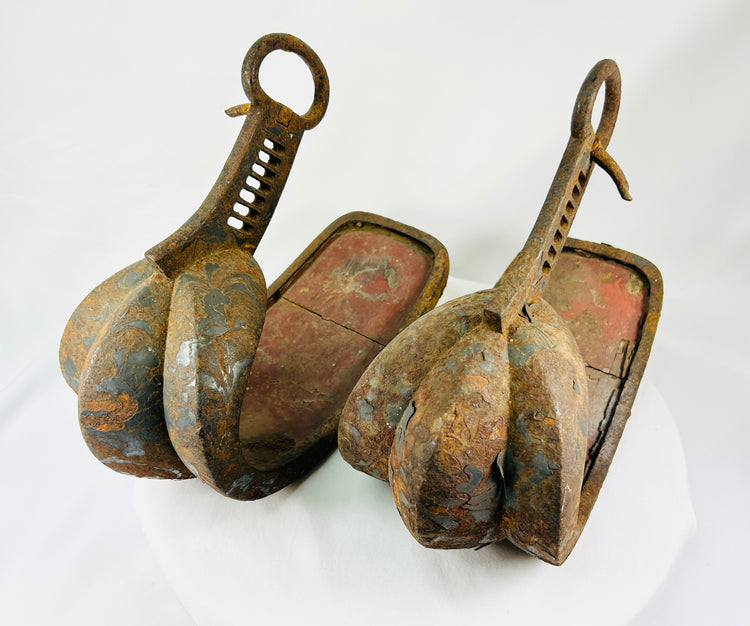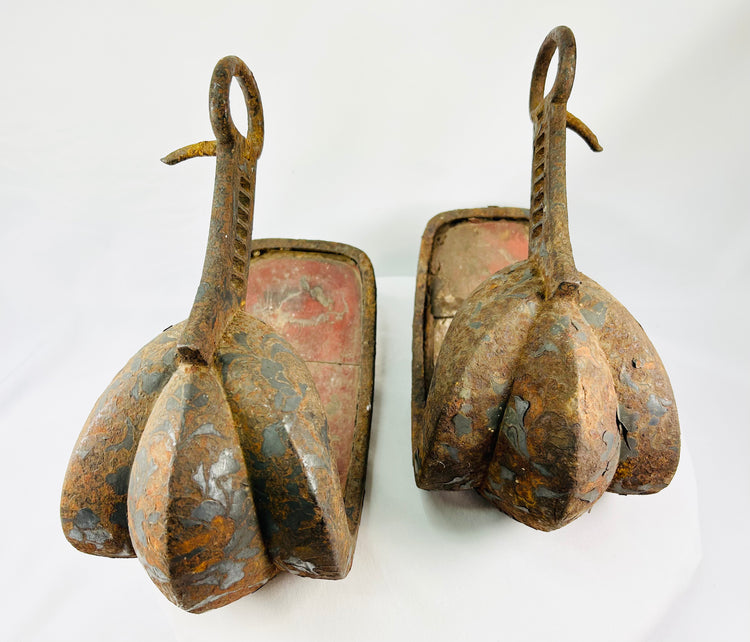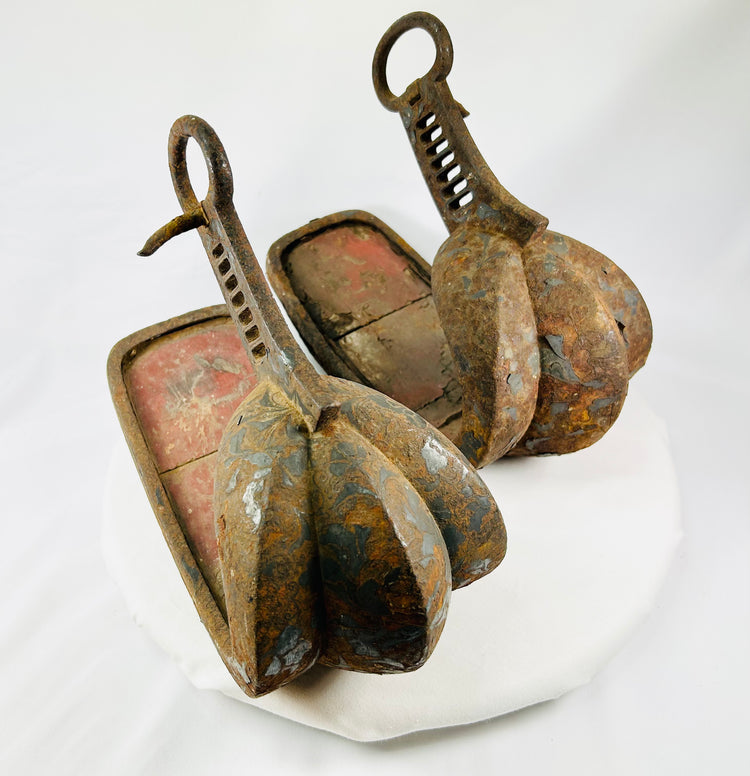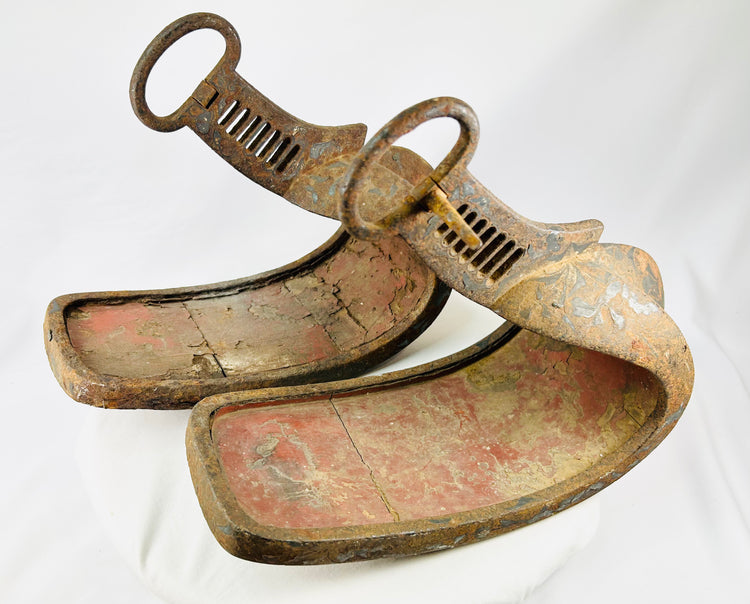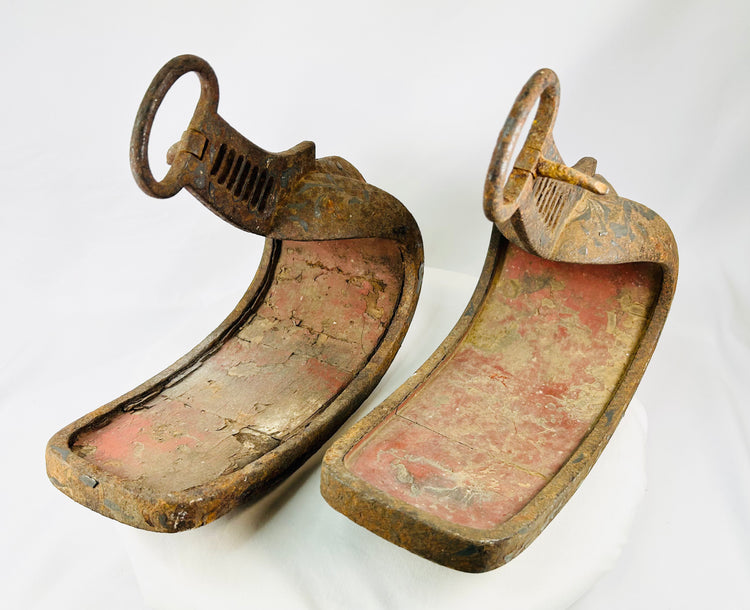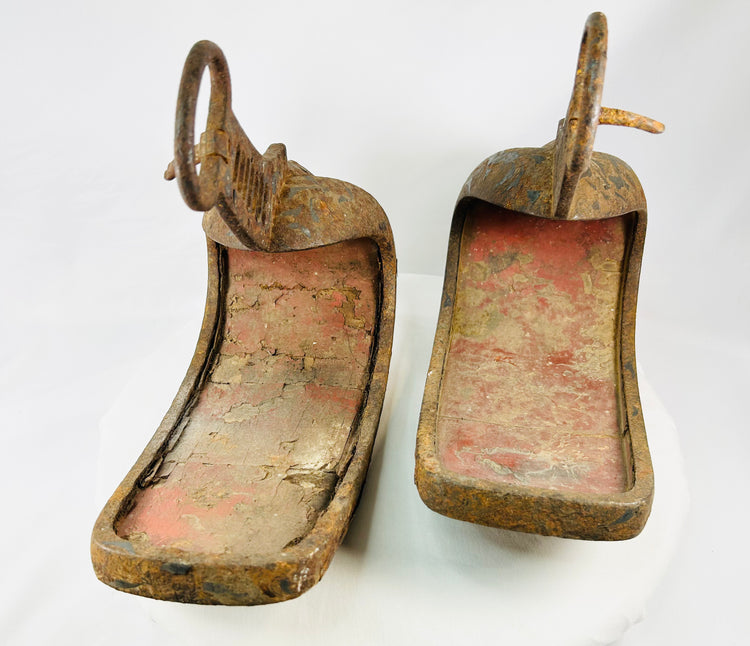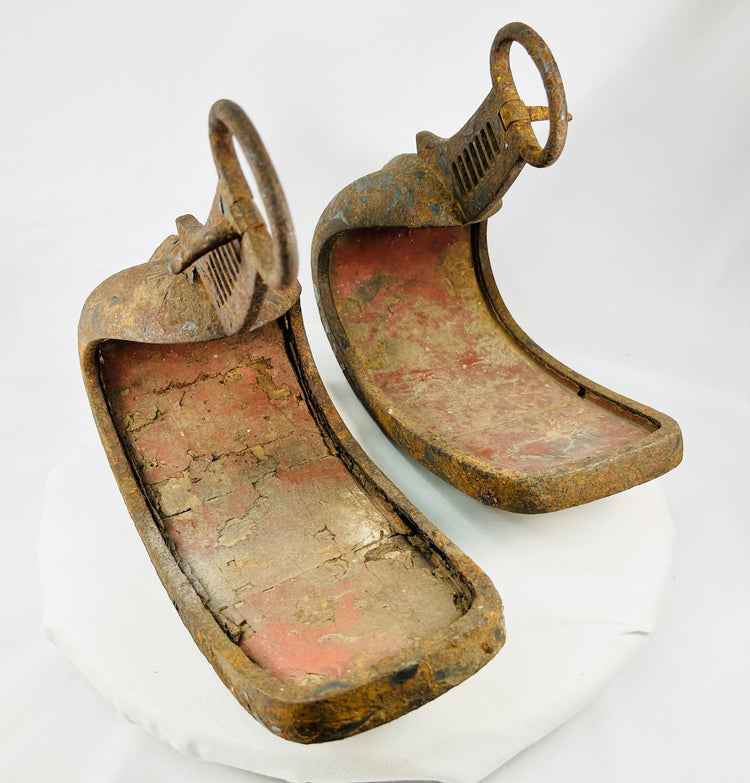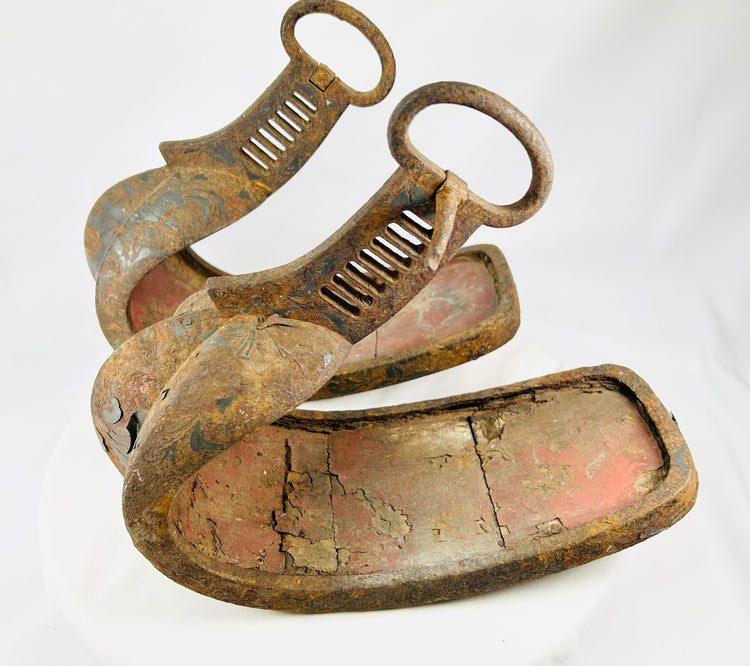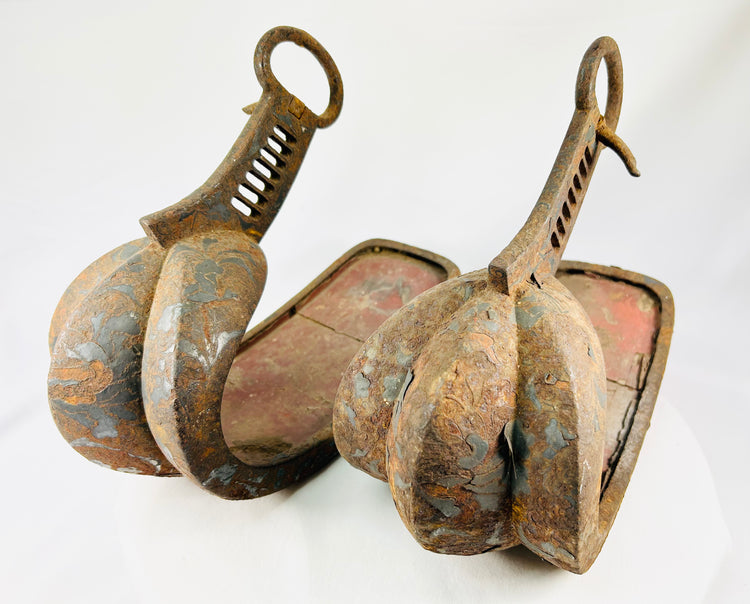Edo Period Lacquered Iron Equestrian Footrests | Matched Pair | Circa 1770–1860
Description
More
Less
Historical Context & Origin
Region: Japan
Material: Hand-forged iron with original lacquer; traces of painted scrollwork
Period: Edo period, late 18th–mid-19th century (circa 1770–1860)
Description
A substantial matched pair of Japanese abumi—the distinctive stirrups of the samurai class—crafted with broad, scooped foot treads and tall risers pierced with ladder-like slots, each fitted with large suspension rings. The bulbous, triple-lobed fronts serve as protective toe guards, a form favored for mounted archery and armored riding.
The interiors retain the classic vermilion-red lacquer, while the exteriors preserve remnants of black/brown lacquer and painted floral scrolling. Sculptural in form and presence, these abumi embody the martial and ceremonial life of the Edo-period warrior.
Features
- Matched pair of Edo-period abumi with large suspension rings and ladder-slotted risers
- Broad, curved treads with raised rims and triple-lobed toe guards
- Original lacquer: red interiors, black/brown lacquer remnants with scrollwork on exteriors
- Hand-forged iron construction with deep, aged patina
- Striking sculptural form, ideal for display
Cultural Significance
Abumi were essential tools of mounted samurai, designed to provide a stable platform for mounted archery (yabusame) and sword combat. Their broad treads improved balance and shock absorption, while the triple-lobed toe guards protected the rider’s feet during battle and riding through brush.
By the Edo period, with warfare replaced by pageantry, abumi evolved into emblems of status and refinement. Saddlery and armor were prominently displayed during sankin-kōtai processions, and the use of auspicious red lacquer interiors demonstrated vigor, grip, and weather resistance. These stirrups, combining metalwork and lacquer artistry, exemplify the craftsmanship and ceremonial display of the samurai elite.
Condition
Good antique condition with honest age and use. Stable oxidation throughout, flaking and losses to lacquer, minor age cracks and separations to tread lacquer layers, small dings, and old repairs. Structurally sound for display; not suited for riding use.
Dimensions (approximate)
Length: 11.5 in
Width: 5.5 in
Height: 9.5 in
Age
Edo period, late 18th–mid-19th century (circa 1770–1860)
Description
Historical Context & Origin
Region: Japan
Material: Hand-forged iron with original lacquer; traces of painted scrollwork
Period: Edo period, late 18th–mid-19th century (circa 1770–1860)
Description
A substantial matched pair of Japanese abumi—the distinctive stirrups of the samurai class—crafted with broad, scooped foot treads and tall risers pierced with ladder-like slots, each fitted with large suspension rings. The bulbous, triple-lobed fronts serve as protective toe guards, a form favored for mounted archery and armored riding.
The interiors retain the classic vermilion-red lacquer, while the exteriors preserve remnants of black/brown lacquer and painted floral scrolling. Sculptural in form and presence, these abumi embody the martial and ceremonial life of the Edo-period warrior.
Features
- Matched pair of Edo-period abumi with large suspension rings and ladder-slotted risers
- Broad, curved treads with raised rims and triple-lobed toe guards
- Original lacquer: red interiors, black/brown lacquer remnants with scrollwork on exteriors
- Hand-forged iron construction with deep, aged patina
- Striking sculptural form, ideal for display
Cultural Significance
Abumi were essential tools of mounted samurai, designed to provide a stable platform for mounted archery (yabusame) and sword combat. Their broad treads improved balance and shock absorption, while the triple-lobed toe guards protected the rider’s feet during battle and riding through brush.
By the Edo period, with warfare replaced by pageantry, abumi evolved into emblems of status and refinement. Saddlery and armor were prominently displayed during sankin-kōtai processions, and the use of auspicious red lacquer interiors demonstrated vigor, grip, and weather resistance. These stirrups, combining metalwork and lacquer artistry, exemplify the craftsmanship and ceremonial display of the samurai elite.
Condition
Good antique condition with honest age and use. Stable oxidation throughout, flaking and losses to lacquer, minor age cracks and separations to tread lacquer layers, small dings, and old repairs. Structurally sound for display; not suited for riding use.
Dimensions (approximate)
Length: 11.5 in
Width: 5.5 in
Height: 9.5 in
Age
Edo period, late 18th–mid-19th century (circa 1770–1860)
You May Also Like



























